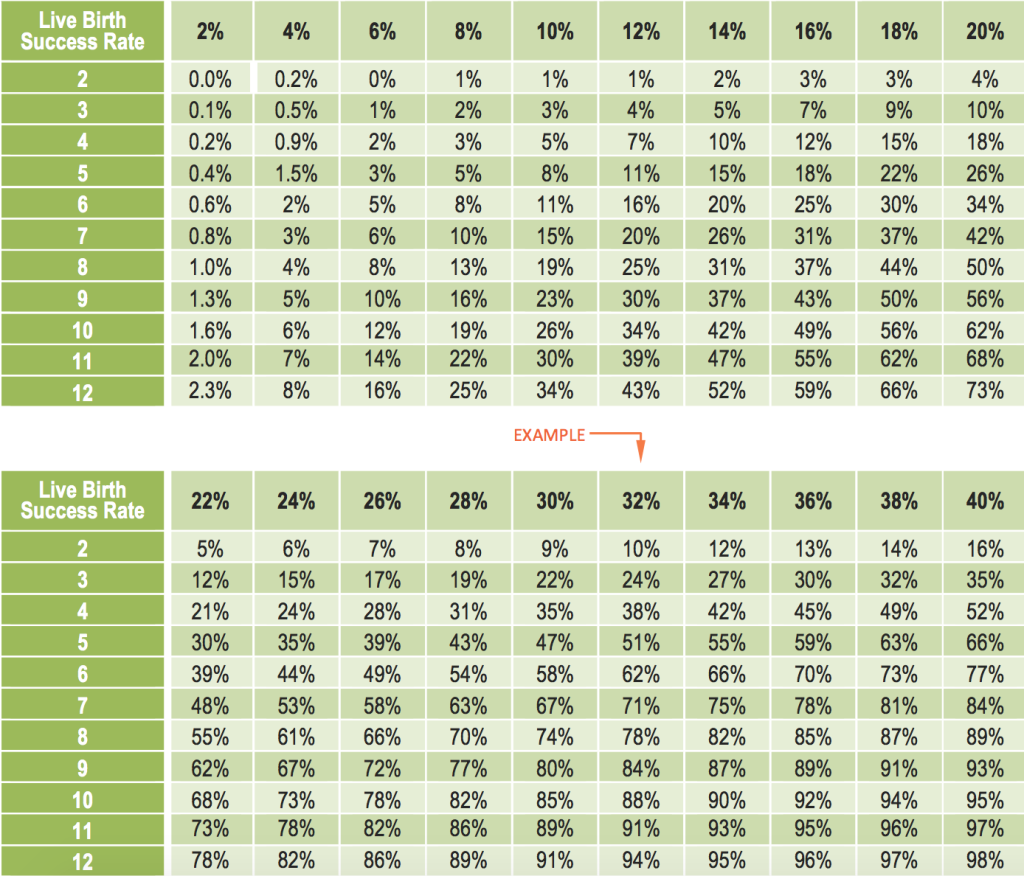

#FET SUCCESS RATES BY AGE SERIES#
In the two published series focused on mothers older than 50 years the same obstetric problems emerged.There is also an increased incidence of pregnancy-induced hypertension (relative risk 2.8), diabetes (RR 14.2), cesarean delivery (RR 4.1), and perinatal mortality (RR 2.4). Pregnancies to women older than 45 years represented only 0.19% of all pregnancies yet accounted for up to 2% of the deaths or severe cardiac events. Although the absolute risks were relatively low, the severity of the morbidity and the possibility of mortality remain important concerns.

Dr Mark Sauer from Columbia University, New York recently reviewed the Nationwide Inpatient Sample profiling American births for years 2008–2010, the associated risks, both medical and obstetric, are significant as women age, including the risk of death. Despite this, pregnancies in these women are considered high-risk and have an increased risk of complications.

We will also have them see a maternal-fetal medicine specialist for a pre-conceptional consultation and a psychologist for a screening visit.

This includes CBC, complete metabolic panel, and a stress EKG. At InVia, we will require patients above age 45 years to have medical clearance for pregnancy prior to being accepted in our egg donor recipient program.Other options that can be considered include donor embryos and adoption. Donor eggs aren't the only alternative conception solution.The pregnancy rate using donor eggs is excellent and exceeds 60% per transfer. The increase in pregnancies is mainly due to the use of donor eggs in this group of patients. The number of women who are having babies after age 45 years is increasing.An exception is a report of a 50 years old woman in India who recently had a live birth with IVF! We have not had a single live-birth in women above age 45 years. We have had several patients at InVia insist on trying IVF with their own eggs. The pregnancy rate with IVF using your own eggs is practically zero.Trisomy 21 risk is 1 in 1,000 in women aged less than 30 years, but rises to 1 in 30 by age 45 years. There is a 50% rate of miscarriage and increased risk of having a baby with chromosomal abnormalities (e.g. You could conceive naturally, however, the chances are low.Here are the top 10 facts about pregnancy after 45: But what about women seeking pregnancy after 45? What are the treatment options available? How risky are these pregnancies? In previous blogs, I have discussed the fact that after age 40, fertility declines precipitously, and have described treatment options for this age group. Women who begin trying to concieve between the ages of 35 – 45 will have to face the fact that their fertility has already started to decline. It often takes years to obtain these goals-years which include a woman's most fertile period from age 15-30. Today it has become increasingly common for women to achieve their educational goals, find a partner, and establish a career path before they consider having children.


 0 kommentar(er)
0 kommentar(er)
